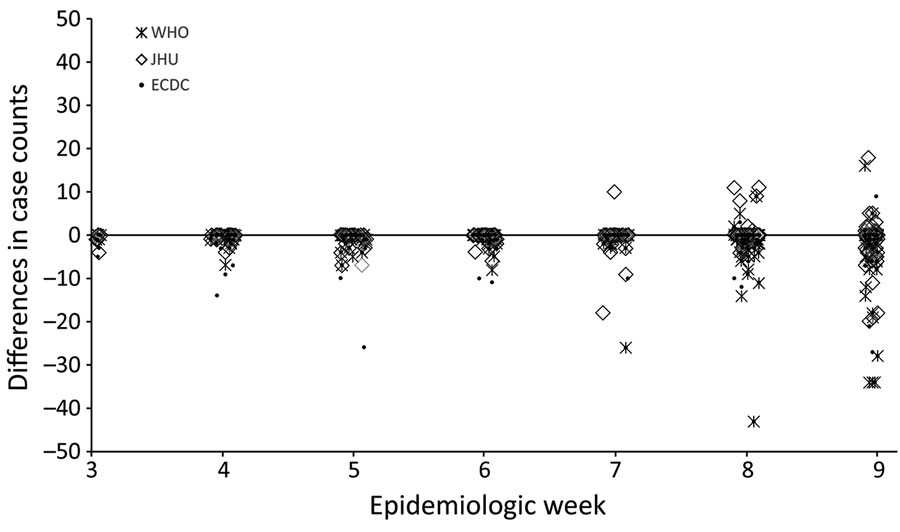Volume 28, Supplement—December 2022
SUPPLEMENT ISSUE
Surveillance
Lessons Learned from CDC’s Global COVID-19 Early Warning and Response Surveillance System
Figure 5

Figure 5. Scatterplot showing differences in individual country COVID-19 cumulative case-counts outside of mainland China and the United States between JHU, WHO, or ECDC systems, and CDC EWARS system during epidemiologic weeks 3–9, January 20–March 7, 2020. A value of zero indicates CDC EWARS and the other system had the same number of weekly cumulative cases for a given country; a negative value means that CDC EWARS reported a higher number of cases; and a positive value means that the other surveillance system reported more cases than CDC EWARS. Differences of >50 cases between CDC EWARS and WHO or ECDC for cumulative country case counts occurred in 6% (18/295) of instances, and between CDC EWARS and JHU in 1% (4/295) of instances. CDC EWARS, US Centers for Disease Control and Prevention global COVID-19 Early Warning and Response Surveillance system; ECDC, European Centers for Disease Control; JHU, Johns Hopkins University Center for Systems Science and Engineering; WHO, World Health Organization.